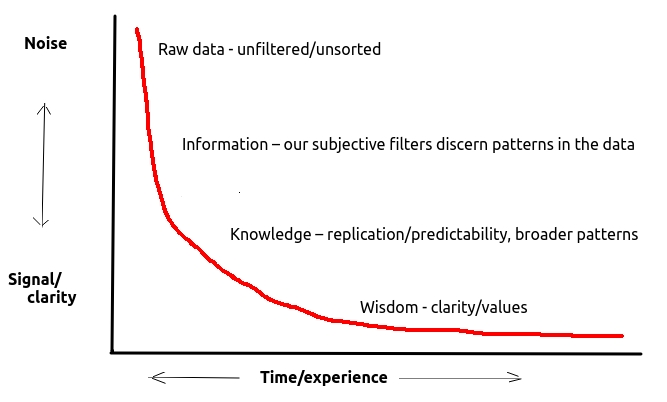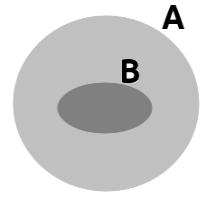
 Cooley
further describes this process of knowledge accumulation as
progressing from novice to beginner to competence to proficiency to
expertise, under which everyone “advances” from specific
analytical “rules” (B) to the recognition of situational or
contextual patterns, seeing broader patterns without decomposing them
into their narrower components. (A) He outlines a broad sphere of
knowledge (A) with an inner sphere (B), which is based on “rules”
or “science”, and the light grey A-B annulus based on experience,
intuition and acquired “know-how” 5
Cooley
further describes this process of knowledge accumulation as
progressing from novice to beginner to competence to proficiency to
expertise, under which everyone “advances” from specific
analytical “rules” (B) to the recognition of situational or
contextual patterns, seeing broader patterns without decomposing them
into their narrower components. (A) He outlines a broad sphere of
knowledge (A) with an inner sphere (B), which is based on “rules”
or “science”, and the light grey A-B annulus based on experience,
intuition and acquired “know-how” 5